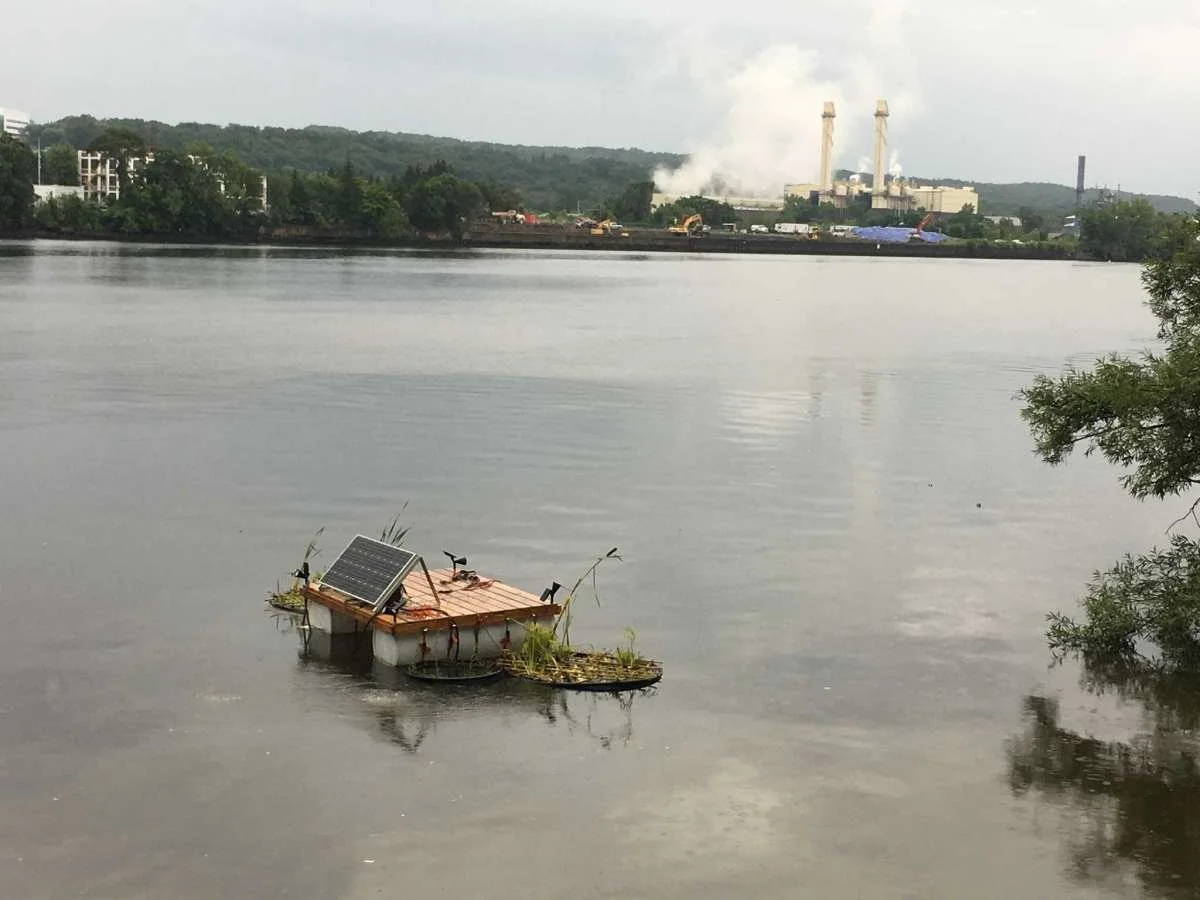Rivers are alive
BY SCOTT KELLOGG
Rivers are alive, they move, they bend, they pulse. Defying containment, rivers express an emergent vitalism arising from the complexity of water and the life within it. Tidal estuaries like the Hudson are among the most abundant ecosystems on Earth – fish, bivalves, and birds proliferate in water mixed with nutrients and sunlight. The seasonal flooding of the Hudson once created rich alluvial deposits on its banks that sustained the indigenous Mohican people for thousands of years.
Within the few hundred years of European colonization, however, the Hudson has been poisoned and walled-off, forsaking the sacred relationship between human and water. Once consisting of bends and oxbows punctuated with islands, the river has now been straightened, deepened, and channelized to facilitate cargo vessel transport. Sewage and industrial effluent have been externalized to the river, with G.E.-genic PCBs rendering it unsafe for fishing. Like prison walls, the highways built to facilitate rapid commuting of suburbanites have cut-off Albany’s residents from the river, making it difficult and dangerous to access the shoreline. Policies of enclosure, urban renewal, and redlining have produced profound ecological alienation among the urban populace, an economically stratified city, and a continual plume of particulate pollution that blankets those below who cannot afford to drive.
An opportunity now exists, however, to make reparations for these mistakes of the past. More than ever, it is critical to dismantle interstate 787 and reconnect the people of Albany with the Hudson. Once reintegrated, the vital energy of the river will again course through the city, initiating social and ecological regeneration. By accessing the river, communities will appreciate it for the treasure that it is and will be motivated to act in its defense out of a sense of love and reciprocity. Sections of the river that have been contaminated and sterilized will be enlivened and have improved capacity to adapt to climate change-induced sea/river level rise. Let this work be done in the spirit of “cities for people, not for profit”, ensuring that all Albany residents are able to enjoy the river and still afford to live on its shores. A more just, equitable, and sustainable future for Albany awaits! •
Scott Kellogg is the Educational Director at the Radix Ecological Sustainability Center in Albany’s South End. He is the author of the new book Urban Ecosystem Justice (2021).


